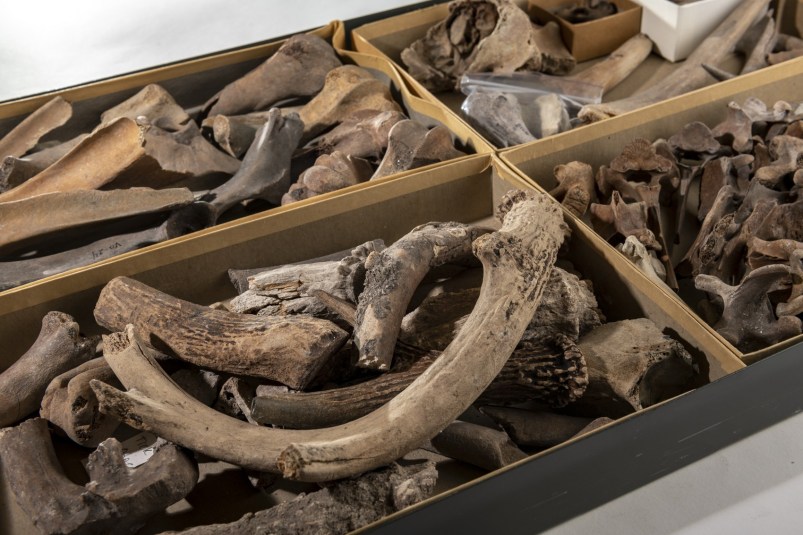
The human environmental footprint is not only deep, but old.
Ancient traces of this footprint can be found in animal bones, shells, scales and antlers at archaeological sites. Together, these specimens tell the millennia-long story of how humans have hunted, domesticated and transported animals, altered landscapes and responded to environmental changes such as shifting temperatures and sea levels.
Now, that story is available digitally through a new open-access data platform known as ZooArchNet, which links records of animals across biological and archaeological databases.
Making these specimen records accessible digitally helps provide a long-term perspective on current biodiversity crises, such as animal extinction and habitat loss, and could lead to more informed conservation policies, said Michelle LeFebvre, postdoctoral associate at the Florida Museum of Natural History and lead author of a study introducing ZooArchNet.
“If we’re interested in really understanding the long history of human-animal interactions and environmental change, these records are key,” she said. “They fill a gap between paleontological and modern records and reconstruct biodiversity baselines from the earliest periods of human history.”
Zooarchaeological specimens – which can range from a carved bone pin to a shell fragment from a heap of discarded oysters – provide both biologically and culturally important information, LeFebvre said.
ZooArchNet connects the biological data for these ancient animal specimens in VertNet and other biodiversity databases with their associated archaeological information in cultural databases such as Open Context.
Robert Guralnick, co-principal investigator of ZooArchNet and Florida Museum associate curator of bioinformatics, said the platform’s goal is “not to be ‘yet another data portal,’ but a connector across disciplines. In that way, ZooArchNet is more of a bridge than anything else, but it does that bridging in a formal way to make data work.”
This interdisciplinary connection will enable data-rich biodiversity research essential for understanding humans’ widespread impact on the environment, said Kitty Emery, co-principal investigator of ZooArchNet and Florida Museum associate curator of environmental archaeology.
“We often think that our dramatic influence on the natural world is a modern phenomenon, but in reality, humans have shaped the environment for hundreds of thousands of years,” she said. “Factoring that history into current studies of biodiversity can provide ancient lessons about how and why people make certain decisions about using their environment. Why do people hunt some animals to extinction and domesticate others? What motivates them to shift from sustainable environmental uses to ones that decimate landscapes? The human component provides that side of the equation – an essential piece of the puzzle when trying to solve modern environmental problems.”
As conservation groups prioritize species on the brink, zooarchaeological records can offer insights into where animals lived in the past, how their distribution has shifted, what roles people may have played in their movements and how close relationships between people and domesticated animals have evolved over time. Sometimes these records tell a surprising story, LeFebvre said.
Her work with historical records of hutia, Caribbean rodents that resemble small capybaras, shows that indigenous people transported some of these animals to new islands, expanding their range into areas where they had not lived previously. These records can lead to better-informed conservation of hutia, several species of which are currently vulnerable to extinction or in danger of disappearing from certain islands, LeFebvre said.
“When you see people saying, ‘This critter is native to this island chain,’ these records help us say, ‘Actually, it was human-introduced and we should think about what that may mean for conservation efforts over time,’” she said. “Zooarchaeological specimens really contribute to what we conceptualize as natural distributions.”

 These deer antlers were found at an archaeological site known as Tick Island in Volusia County, Florida. Florida Museum photo by Kristen Grace
These deer antlers were found at an archaeological site known as Tick Island in Volusia County, Florida. Florida Museum photo by Kristen Grace  Collected from Florida’s Marco Island, these remains belong to Caribbean monk seals, Monachus tropicalis, a species now extinct due to hunting and overfishing of its habitats. Florida Museum photo by Kristen Grace
Collected from Florida’s Marco Island, these remains belong to Caribbean monk seals, Monachus tropicalis, a species now extinct due to hunting and overfishing of its habitats. Florida Museum photo by Kristen Grace  This notched piece of river cooter shell, left, and pin carved from an unidentified mammal bone were collected at Fort Center, an archaeological site west of Lake Okeechobee in Florida. Florida Museum photo by Kristen Grace
This notched piece of river cooter shell, left, and pin carved from an unidentified mammal bone were collected at Fort Center, an archaeological site west of Lake Okeechobee in Florida. Florida Museum photo by Kristen Grace  Archaeologist Michelle LeFebvre examines fragments collected from a shell ring on St. Catherines Island off the coast of Georgia. Florida Museum photo by Kristen Grace
Archaeologist Michelle LeFebvre examines fragments collected from a shell ring on St. Catherines Island off the coast of Georgia. Florida Museum photo by Kristen Grace  These hutia remains from the Caribbean islands are part of LeFebvre’s ongoing research on the role humans played in transporting these small rodents. Florida Museum photo by Kristen Grace
These hutia remains from the Caribbean islands are part of LeFebvre’s ongoing research on the role humans played in transporting these small rodents. Florida Museum photo by Kristen Grace  These jawbones come from animals collected at archaeological sites in the southeastern U.S. The bottom of the black bear jaw in the center box has been cut, possibly for use in a mask. Florida Museum photo by Kristen Grace
These jawbones come from animals collected at archaeological sites in the southeastern U.S. The bottom of the black bear jaw in the center box has been cut, possibly for use in a mask. Florida Museum photo by Kristen Grace